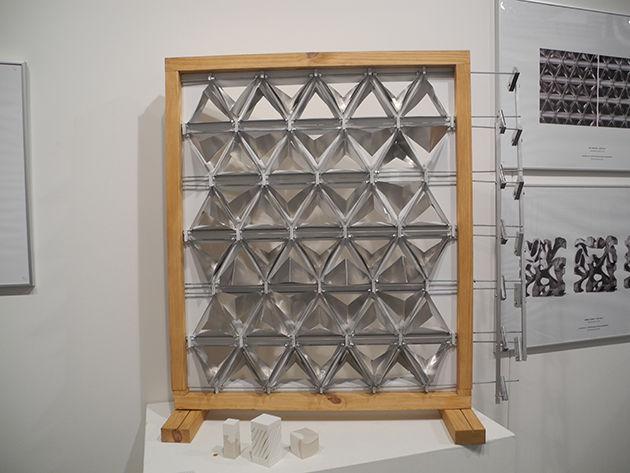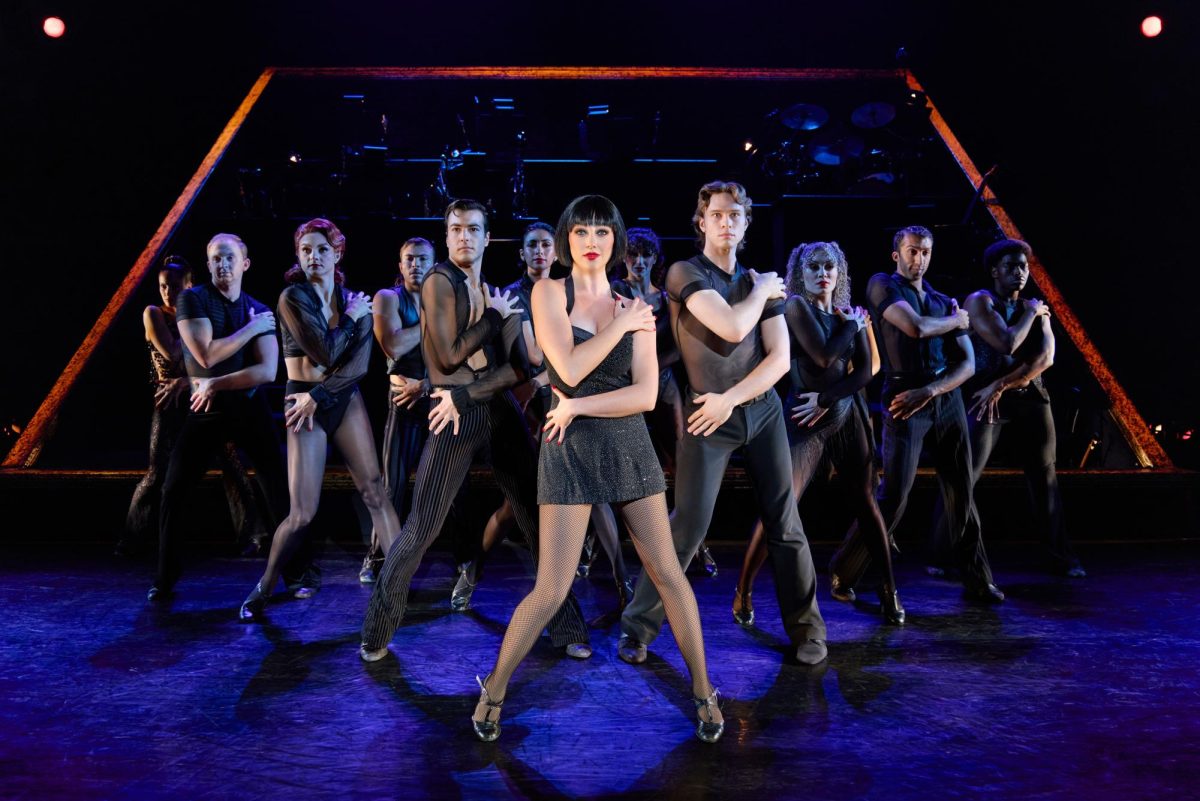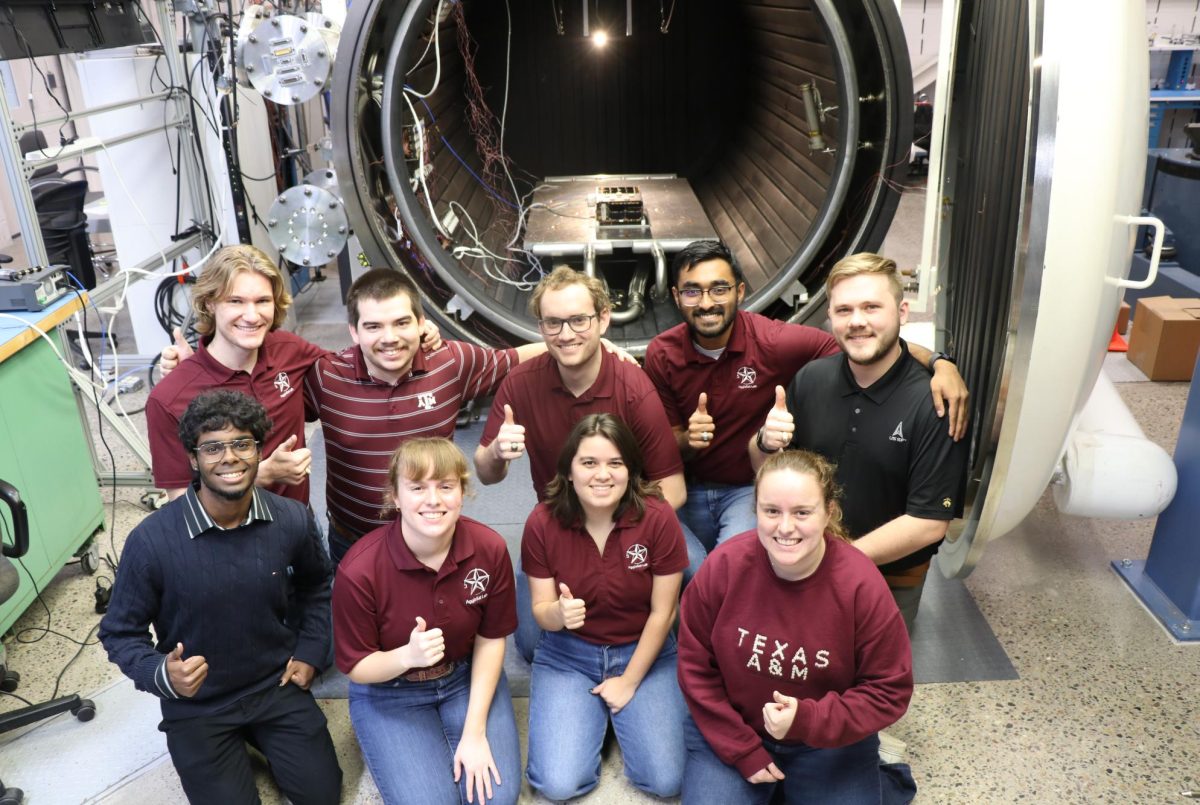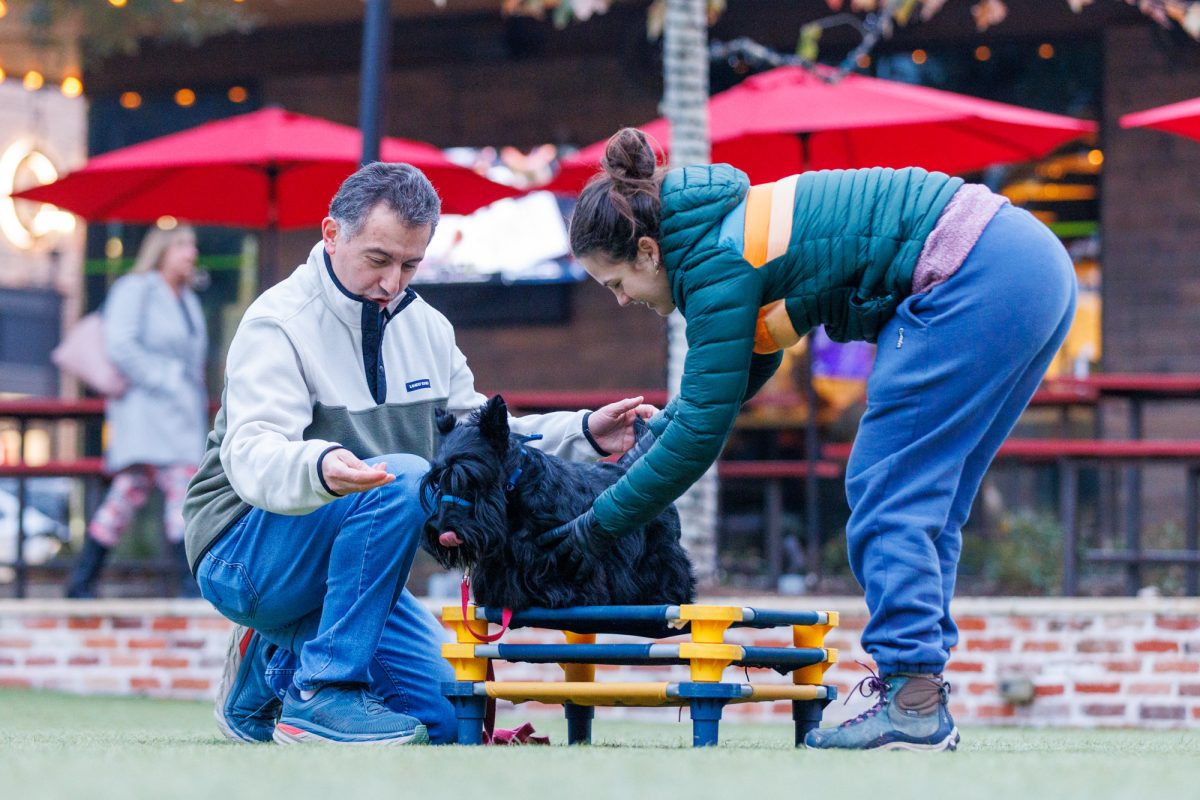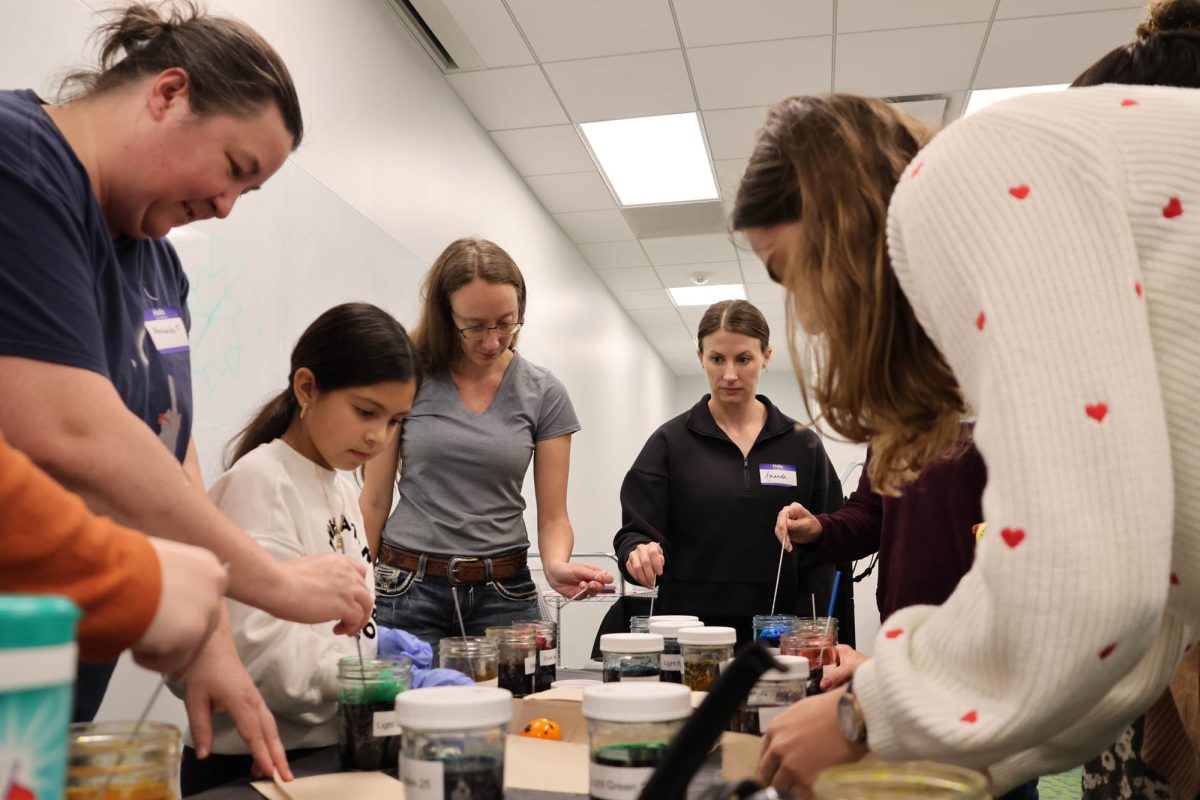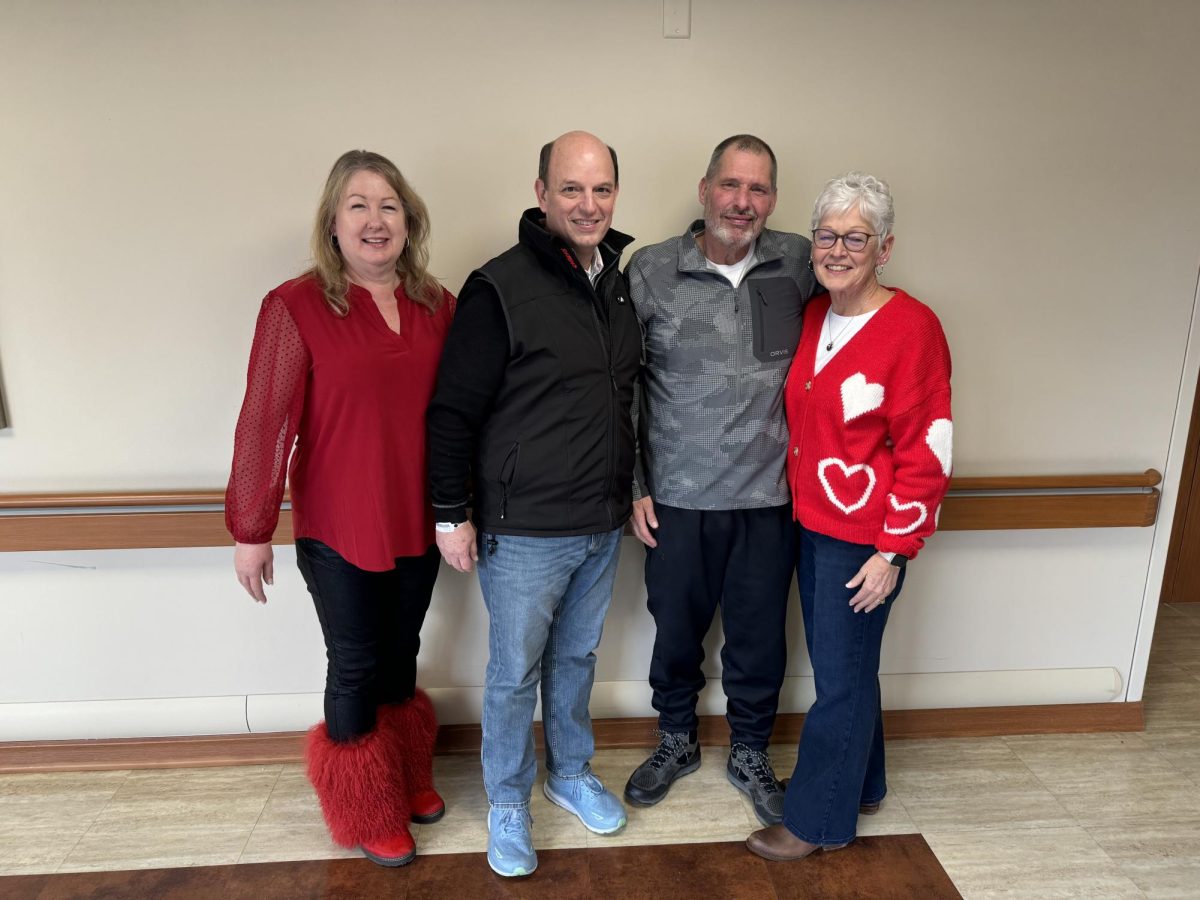The dynamism of nature is reflected through the works of architecture students on display in the J. Wayne Stark Galleries.
The exhibit “TRANS: Adaptive Thought, Design, and Fabrication” showcases transformable design work, which examines the movement in everyday features such as doors, windows and blinds, said Negar Kalantar, the assistant professor who teaches the students whose work is on display.
“In nature, nothing is static,” Kalantar said. “Our environment is changing, but our buildings are always static and they don’t react to those changes. There are a lot of parts of buildings that they can move.”
In class, senior students began their transformable design work on a smaller scale with details such as kinetic tessellations and joints. Then, they tested their skills by designing larger objects such as doors and shading systems.
Origami inspired the sliding and folding of the door, named “ORUdoor,” created by Leslie Tijerina.
“I started looking at origami, how it starts folding and it can kind of concave and convex on its own and create different shapes,” Tijerina said.
Pictures of each student’s work can be seen in the reference book in the gallery. There, viewers can get a peek into the thought process behind each project.
When designing their projects, students were presented with the situation of the sunlight shining through a glass wall at the Museum of Fine Arts in Houston to draw inspiration.
“Fabrication without having a context — it doesn’t make sense,” Kalantar said. “You have to have a question and a big problem.”
Ana Escobar and Eryka Bueno, both 2015 environmental design graduates, proposed their answer with their shading device “SMA Scales,” which incorporated Flexinol Wire. This shape-memory alloy contracts when heated, allowing for the fins to open and close as blinds.
Underclassmen also contributed to the gallery with art from the traditional transformable cube project. Here, Professor Alireza Borhani instructed the students to transform the cube.
“His directions were supposed to be taken as abstract as possible, so we just all kind of ended up with a bunch of different things,” said Sarah Fox, a environmental design sophomore. “Instead of turning it into something else, it was more like radically deconstructing it.”
Fox’s cube, along with a poster of other projects, are displayed in the gallery as well.
On the roof of the architecture revue in Langford A hangs the group project “The Fifth Wall.” The collapsible structure aesthetically displays the collective work of design and creation from the students’ final studio project.
“TRANS: Adaptive Thought, Design, and Fabrication” will be on display through Sept. 25 in the J. Wayne Stark Galleries in the Memorial Student Center.




